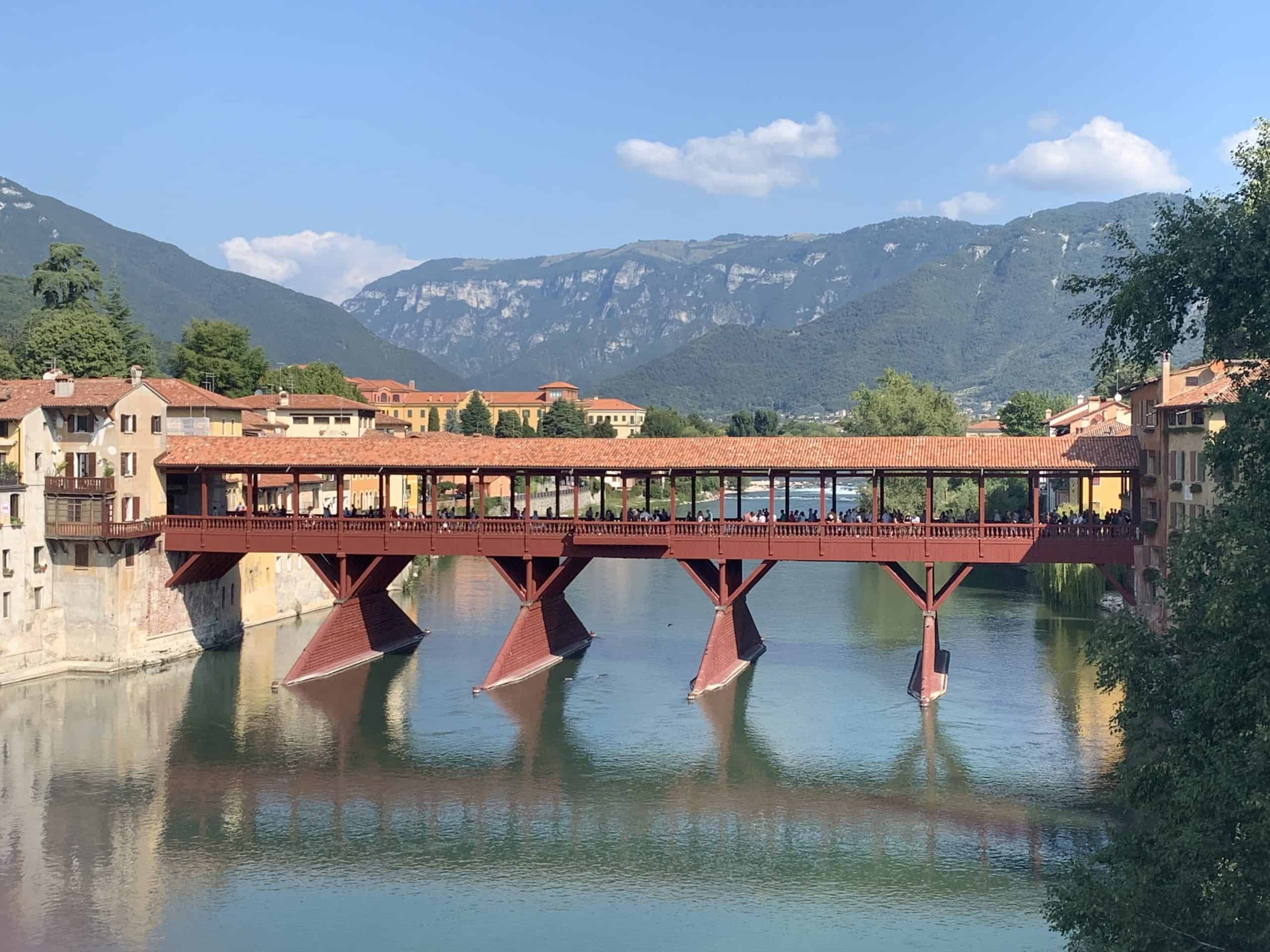
Bassano del Grappa, in the province of Vicenza, is located at the foot of the Venetian Prealps and is one of the major cultural and economic centers of Vicenza.
There are several places of interest but the main ones are the Ponte degli Alpini and the Castello degli Ezzelini.
The first wooden bridge over the Brenta in Bassano del Grappa was built around 1170 to join the two banks in relation to the military needs of the Lombard League. Before, the connections between the two banks of the river were made by ferries or rafts.
Given its strategic position it has made it one of the main military targets over the centuries, which is why it has been torn down several times and then rebuilt.
It was also destroyed by the floods of the Brenta river in 1439, 1529 and 1567 and then always rebuilt in wood.
In the meantime, Bassano del Grappa had become part of the Republic of Venice, while maintaining its administrative autonomy. Senate of the Serenissima had decided to replace all the wooden bridges with as many in stone but in the end the protests of the Bassanesi were heard and the Senate rebuilt the wooden bridge. The project was designed by Andrea Palladio in 1569 with its elegant line that has remained to this day.
The bridge was destroyed again on August 19, 1748, overwhelmed by a terrible flood.
In 1813 the Napoleonic armies after a battle with the Austrian troops to delay their march, burned the bridge. With the financial help of some citizens, the bridge was rebuilt in February 1821.
The new structure is destined to last, resists the pitfalls of the First World War but, in 1945 the bridge was destroyed again. In 1948 the Bridge was rebuilt by the will of the Alpini who made it their own symbol and that is why since then it is also commonly called Ponte degli Alpini.
The Castle of the Ezzelini, whose existence is documented even before 900, was of vital importance thanks to its role of fortification and defense of the city until the fifteenth century, when it was abandoned with the passage under Venetian rule.






